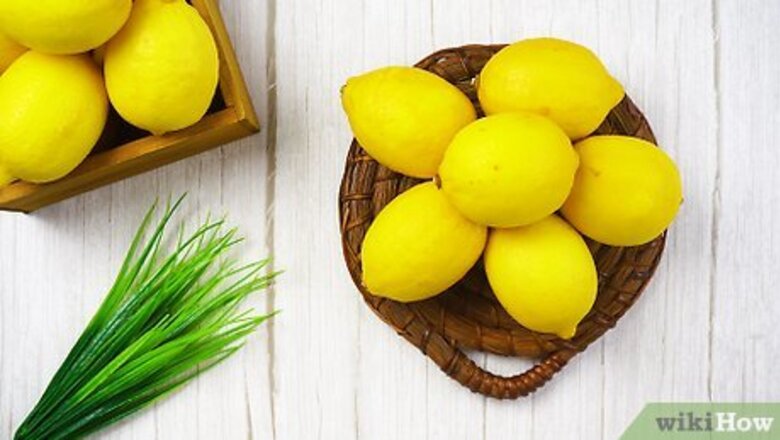
views
- For juicing a lemon, roll a room-temperature lemon on a table with your palm. Then, cut it in half lengthwise, or into thirds widthwise.
- For wedges, cut about 0.5-1 in (1-2.5 cm) from each end. Then, stand the lemon upright, cut it into quarters, and slice each wedge in half lengthwise.
- For twists, cut the lemon in half widthwise and slice off a 0.25 in (0.64 cm)-thick round. Make a cut down the center, remove the pulp, then twist the rind.
Cutting a Lemon for Juicing

Bring the lemon up to room temperature if it's chilled. The juice will flow more easily if the lemon is warmed, so let it come to room temperature on the counter, place it in warm (not boiling) water for 3-5 minutes, or microwave it for no more than 10-15 seconds. This is only necessary if the lemon was in the refrigerator.

Roll the lemon on the table by hand to soften it a little. After you bring the lemon to room temperature, apply steady pressure with your palm as you roll the lemon back and forth on the table or counter. Pressing on the lemon as you roll it will weaken the membranes inside and allow the juice to flow more easily. However, don’t press so hard that you split the lemon open and spray yourself with lemon juice!
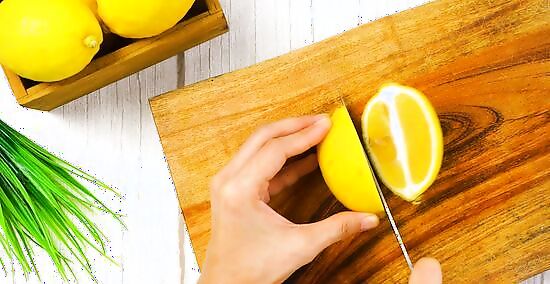
Cut the lemon in half lengthwise instead of widthwise (option 1). If you’re like most people, you probably cut a lemon in half at its fattest section in the middle. However, if you cut it from end-to-end lengthwise, you’ll expose far more of the interior of the fruit, and therefore make it much easier to extract more juice. To further increase the amount of extracted juice, use a fork to loosen up the interior membranes of the lemon before you squeeze each half.
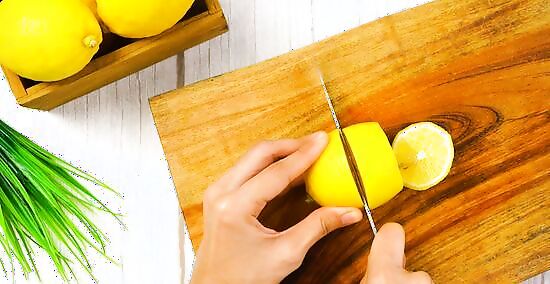
Slice the lemon widthwise into thirds instead of halves (option 2). Instead of cutting it in half at its fattest part in the middle, make 2 widthwise cuts to create 3 roughly equal sections of lemon. Use a fork to loosen the membranes, then squeeze out the juice. By cutting the lemon into thirds instead of halves, you’ll expose more of the surface area of the membranes that contain the juice. You can compare it to pouring water through a funnel with a wide-mouth spout instead of a narrow spout.

Square off the rounded sides of an upright lemon with your knife (option 3). Hold the lemon upright on the cutting board with one hand, so that the lemon looks like a circle from above. Make 4 downward cuts with your knife around the outside of the lemon to turn the circle shape into a square shape. Squeeze the squared-off center section to get most of the juice, then squeeze each of the 4 cut-off pieces to extract whatever juice they contain. There’s no way to avoid getting lemon juice on your hand when you squeeze the center section, so consider wearing gloves if that’s a concern for you.
Making Lemon Wedges
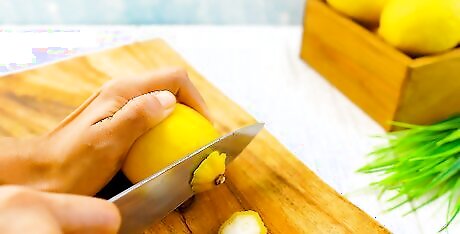
Cut off the “top” and “tail” of the lemon. Lay the lemon on its side on a cutting board and hold it steady with one hand. With a sharp knife in your other hand, cut off the top and bottom ends (the “top” and “tail”) of the lemon. The fruit should now be in the shape of a barrel placed on its side. You only need to remove about 0.5–1 in (1.3–2.5 cm) from both the top and tail ends. This process will end up creating 8 wedges. If you need 16 smaller wedges, cut the lemon in half while it’s on its side, after you remove the “top” and “tail.” Then proceed with each lemon half as described below, as if they are whole lemons.
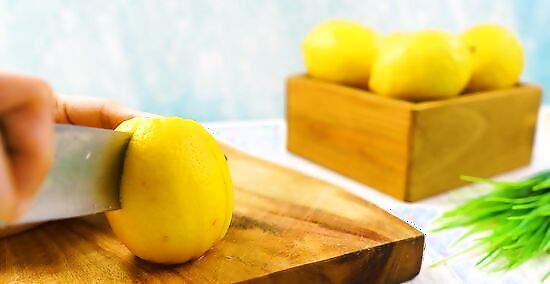
Stand the lemon upright and cut it into quarters. Place the lemon vertically on the cutting board so that the now-flattened top or bottom is facing up at you. Cut straight down through the lemon with your knife to cut it in half lengthwise, then rotate the lemon 90 degrees and make another downward cut to create 4 equal sections. Steady the upright lemon with your free hand while cutting it, but be sure to keep it clear of the knife.
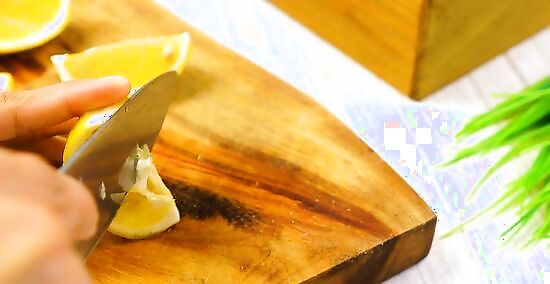
Cut down to remove the pith and seeds from each upright lemon quarter. Take each quarter one at a time and hold it upright along the skin side. Slice down through the pith (the stringy, more sponge-like section at the center of a whole lemon), which also contains the seeds. Discard the pith and seeds. The pith will likely be around 0.25–0.5 in (0.64–1.27 cm) thick at the tip of each quarter.

Cut each quarter in half to create 8 completed lemon wedges. Simply lay each quarter on its side (skin side down) on the cutting board. Use your free hand to hold each piece steady, and cut each quarter in half to end up with 8 equal wedges. Add lemon wedges to cold drinks like ice water or iced tea, or use them as a garnish for seafood or other dishes. You can store cut lemon wedges in the refrigerator for up to 3 days.
Creating a Lemon Twist Garnish for a Glass
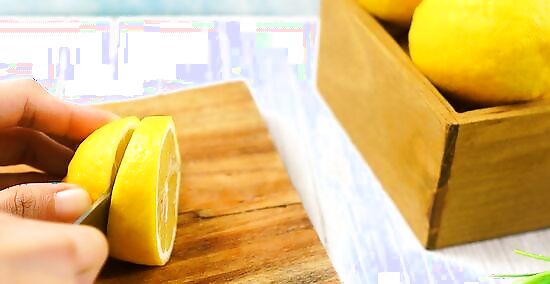
Slice a 0.25 in (0.64 cm)-thick round from the fat part of the lemon. Lay the lemon on its side and cut it in half. Take one half and cut a quarter-inch thick slice from the cut end. Place this lemon slice flat on the cutting board. You can use the remainder of the lemon for juicing or to create wedges. If you need to make several garnishes, cut off either the top or bottom of the lemon and then cut a series of 0.25 in (0.64 cm) rounds as you work your way to the other end of the lemon.

Cut the lemon round nearly in half, but preserve the rind and peel on one side. With the lemon round flat on the cutting board, insert the tip of your knife just inside the perimeter of the white rind at the 12 o’clock position. Chop straight down through the center of the lemon pulp, as well as the rind and peel at the 6 o’clock position. If you need help picturing this, imagine cutting a pizza in half with a pizza cutter, but stopping just before you cut through the crust on one side.

Cut around the inside perimeter of the rind and remove the lemon’s interior. Start at the 6 o’clock position where you cut through the rind and peel, and use the tip of your knife to cut all the way around the inside perimeter of the rind. Once the rind and peel are separated from the lemon pulp, discard the pulp. When you’re finished, you’ll have a ring that’s yellow on the outside (the peel) and white on the inside (the rind), with a single cut going through it at the 6 o’clock position.

Rotate the ends of the ring in opposite directions to create the twist. Pick up the ring and pull it apart into a straight line with one end in each hand. Rotate one hand away from you 180 degrees while you rotate the other hand toward you 180 degrees. Then, re-grip each end and continue rotating in opposite directions another 180 degrees (for 360 degrees total). This twisting motion will create a series of spirals in the lemon ring. The spirals will hold their shape once you let go of the ends. If you want more spirals, twist the ends around in opposite directions another time. Hook one of the curls onto the rim of your glass to use this twist as a garnish. You can follow the same process to make lime twist garnishes.



















Comments
0 comment